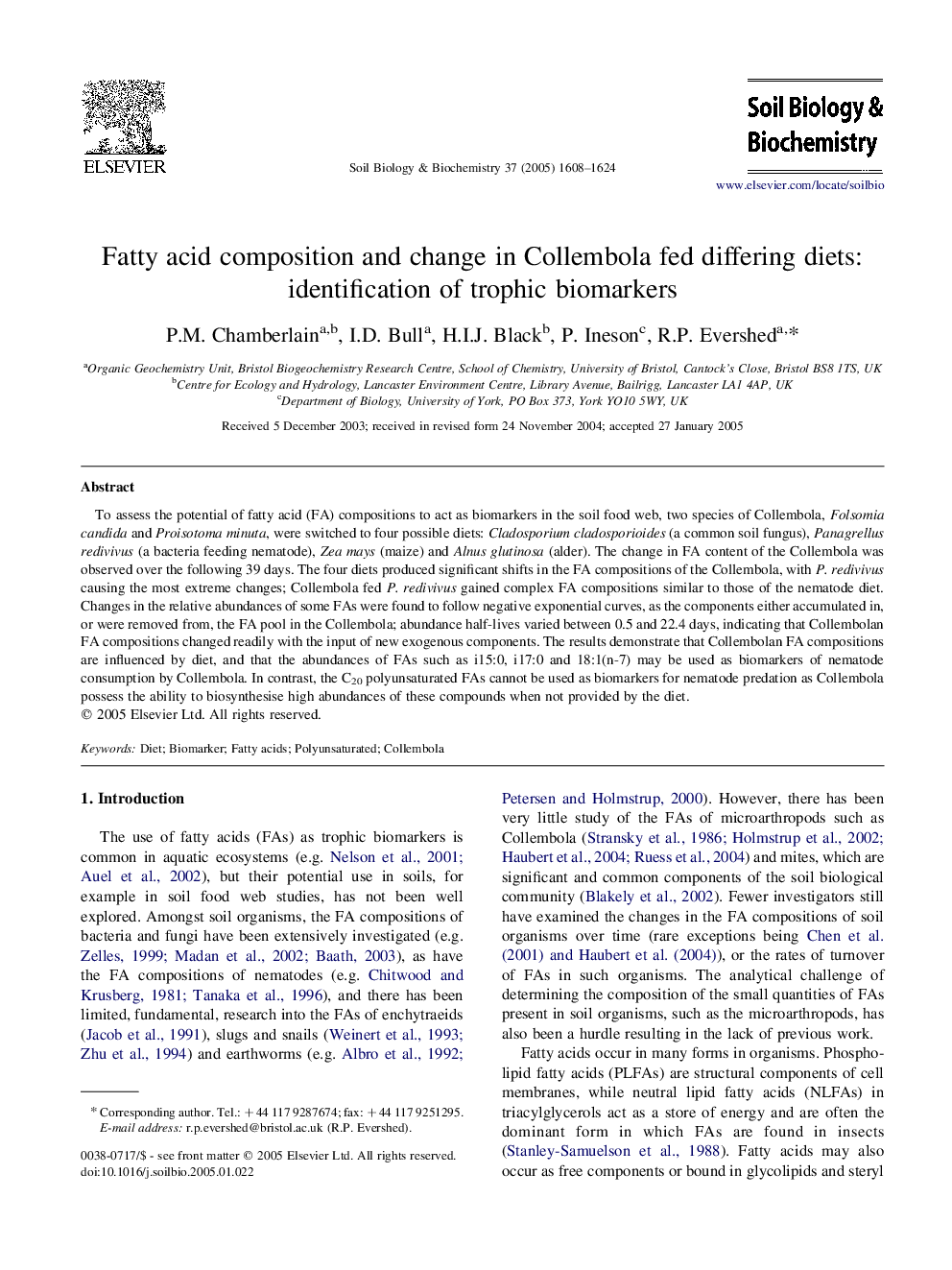| Article ID | Journal | Published Year | Pages | File Type |
|---|---|---|---|---|
| 10846168 | Soil Biology and Biochemistry | 2005 | 17 Pages |
Abstract
To assess the potential of fatty acid (FA) compositions to act as biomarkers in the soil food web, two species of Collembola, Folsomia candida and Proisotoma minuta, were switched to four possible diets: Cladosporium cladosporioides (a common soil fungus), Panagrellus redivivus (a bacteria feeding nematode), Zea mays (maize) and Alnus glutinosa (alder). The change in FA content of the Collembola was observed over the following 39 days. The four diets produced significant shifts in the FA compositions of the Collembola, with P. redivivus causing the most extreme changes; Collembola fed P. redivivus gained complex FA compositions similar to those of the nematode diet. Changes in the relative abundances of some FAs were found to follow negative exponential curves, as the components either accumulated in, or were removed from, the FA pool in the Collembola; abundance half-lives varied between 0.5 and 22.4 days, indicating that Collembolan FA compositions changed readily with the input of new exogenous components. The results demonstrate that Collembolan FA compositions are influenced by diet, and that the abundances of FAs such as i15:0, i17:0 and 18:1(n-7) may be used as biomarkers of nematode consumption by Collembola. In contrast, the C20 polyunsaturated FAs cannot be used as biomarkers for nematode predation as Collembola possess the ability to biosynthesise high abundances of these compounds when not provided by the diet.
Related Topics
Life Sciences
Agricultural and Biological Sciences
Soil Science
Authors
P.M. Chamberlain, I.D. Bull, H.I.J. Black, P. Ineson, R.P. Evershed,
